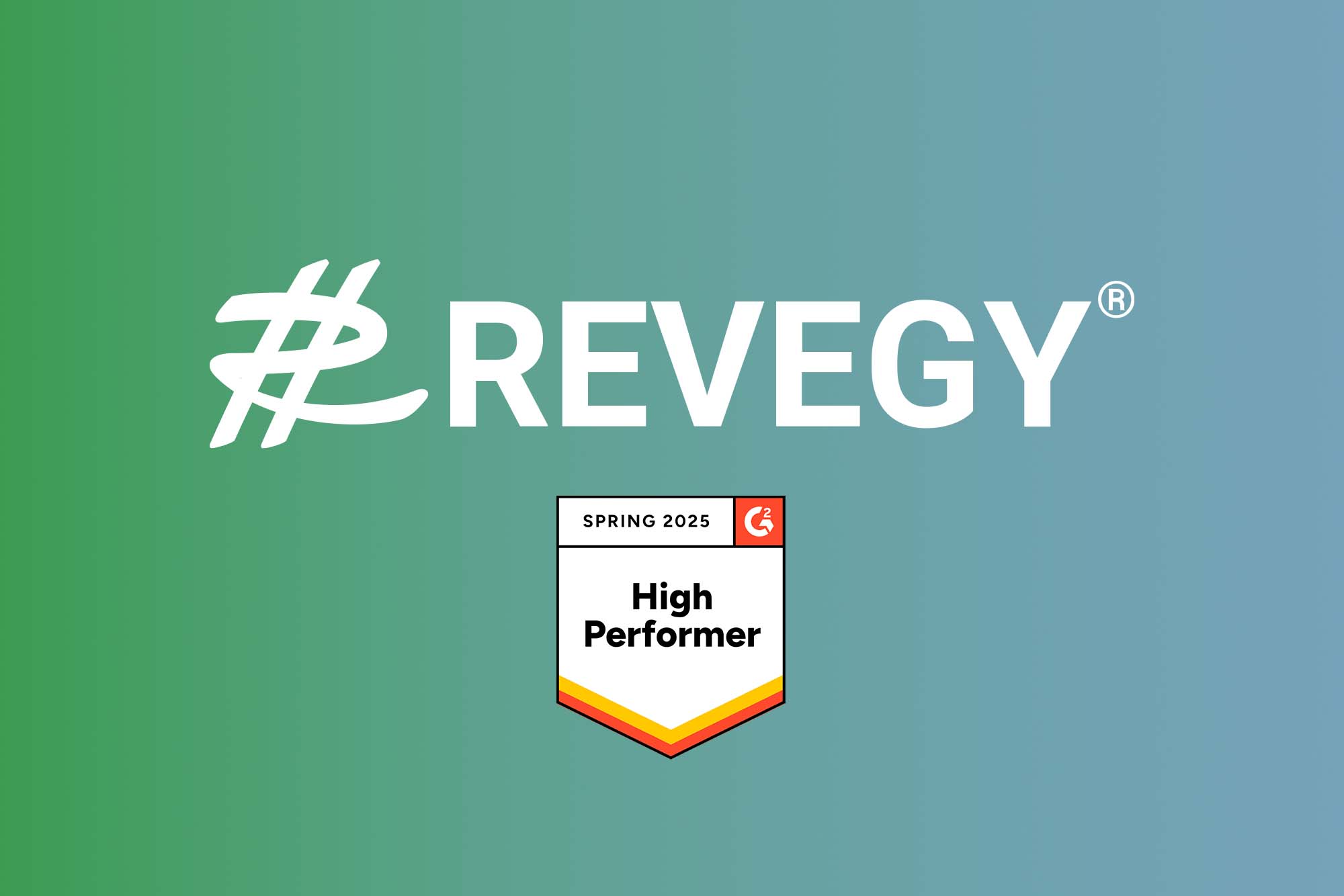Compared to its finance, marketing, and logistics counterparts, sales has traditionally been a laggard regarding digital technologies, and for good reason. According to the Harvard Business Review, despite most digital technologies’ promises to help sales reps increase pipeline volume and velocity, the opposite often proves true because many companies implement a multitude of point solutions. The complexity of the resulting sales tech stack makes the job more cumbersome, overwhelming teams and compromising performance.
Therefore, it may seem surprising that sales, of all corporate functions, is now poised to be one of the primary beneficiaries and would-be champions of generative AI, the form of artificial intelligence used by OpenAI (the company behind ChatGPT) and its competitors. To understand this phenomenon and explore how AI is changing sales, Revegy’s CTO, Bill Donges, recently moderated a webinar with John Barrows, CEO of JB Sales, and Richard Harris, Founder of The Harris Consulting Group. The team uncovered four ways AI is transforming the sales landscape and identified some of AI’s opportunities and risks in commercial organizations:
1. AI as SDR
According to John and Richard, AI has already significantly impacted traditional Sales Development Rep (SDR) functions. It assumes many of the “heavy lift” activities that typically occur early in the sales cycle, such as AI for lead generation, analyzing and optimizing prospecting email and phone messaging, and cadence at scale.
McKinsey & Company estimates that one-fifth of sales tasks could be automated, and Prabhakant Sinha, Arun Shastri, and Sally E. Lorrimer note in a new ar
ticle in the Harvard Business Review that sales is “interaction and transaction-intensive, producing large volumes of data, including text from email chains, audio of phone conversations, and video of personal interactions,” which are “exactly the types of unstructured data the models are designed to work with” and therefore create “immense opportunities for generative AI to interpret, learn, link, and customize.”
John and Richard note that an AI sales tool is even powerful enough to set companies up for prospecting success despite new spam rules from Google and
Yahoo, which stipulate that in 2024, senders must remain under strict thresholds. According to John, “AI will be better than humans. If the send threshold is 5,000, AI will select the perfect 5,000 accounts.”
John and Richard caution, however, that for companies to be successful, they will need to re-build their sales organizations around AI rather than insert AI where it seems convenient. For example, in many organizations, the SDR role is the organizational entry point for sales reps, and it is through the SDR role would-be reps gain their product knowledge, understand the competitive landscape, and hone their skills. Should this training ground be removed, what then is the talent strategy?
The two believe the companies that can quickly and successfully optimize widespread AI sales tools will be the ones that take a holistic approach upfront and build organizational structure, processes, and personnel strategies that account for AI’s role across all functions and support its adoption, deployment, management, and support in a calculated way. Authors Stephen D’Angelo, Bryan Gauch, Audrey Hawks, and Matt Ward agree, advising in a recent article for the Boston Consulting Group that “B2B sales leaders should think about the deployment of each GenAI application as if they were hiring an additional team member, instead of rolling out a technology solution.”
2. AI as Research Assistant
While both John and Richard believe SDRs could be replaced by technology within the next two years, they are quick to point out that just because AI can quickly produce and send the right number of emails at the right time, with the right messaging, doesn’t mean the technology is a cure-all. The two insist there will always be a need for a human element in the “last mile.” Emphasizes John, “Don’t worry about the technology. You’re not going to beat it. Let it do the heavy lifting as long as there’s a person on the other end of the Zoom call. Treat it as a copilot, not as a silver bullet.”
Ken Corbit, a marketing and sales professor at Texas Christian University, agrees. As highlighted in a recent article by Elijah Clark in Forbes, Ken commented, “While AI can offer incredible data analytics capabilities, the human ability to build personal connections and provide tailored solutions remains paramount. Human salespeople can perceive subtleties in mood, understand complex needs through a simple conversation, and make customers feel valued and appreciated in a way that technology can’t yet mimic, often due to non-verbal cues and engagement.”
John and Richard also highlight research from Gartner, which reports that while 43% of B2B buyers say they want a rep-free buying experience, a significant number of those who purchased without a rep came to regret their decision. Therefore, rather than view AI as a replacement for sales, John and Richard see an opportunity for sales to significantly reassess the value sales adds to the equation.
And they believe AI is instrumental in reframing this value.
According to John, with the support of AI, “sales can finally become the thought leader.” Richard agrees, sharing that he often reminds his clients that buyers need to “fall in trust” with the seller, and AI is the gateway to truly personalizing the sales journey and thereby earning this trust.
For example, sales reps can lean on AI research to prepare for each customer touchpoint in the sales cycle, asking for critical information such as the summary of a 10-K or getting answers to questions like, “How do I negotiate with procurement?” or “What are this CRO’s top priorities?” John also points out that sales reps can better plan meetings by tasking AI to build personalized agendas and feed the sales reps pre-formulated but insightful talk tracks. “You can ask AI, ‘What are three to four problem-oriented topics I can base my conversation around?’ and, ‘What are two to three impact questions I can ask?’”
This degree of hyper-personalization allows B2B companies to form B2C-like connections with customers. States authors Richelle Deveau, Sonia Joseph Griffin, and Steve Reiss, in a recent article from McKinsey & Company, “Winning B2B companies go beyond account-based marketing and disproportionately use hyper-personalization in their outreach.”
McKinsey also highlights that AI research can accelerate end-of-funnel activities beyond personalization, guiding sales reps through negotiations in real-time with “predictive insights based on comprehensive analyses of historical transaction data, customer behavior, and competitive pricing.”
John and Richard predict that a successful sales rep will be the one who uses AI to their advantage and asks the technology the right questions. States John, “The customer doesn’t care who wrote the email. The customer cares about the conversation. AI enables the sales rep to be relevant.” Consulting firms like Deloitte and academic centers like Texas Christian University’s Sales Center agree, as noted by Clark in Forbes. Both offer sales training programs that combine “technological prowess with relational skills to enhance rapport building and solutions-oriented engagement.”
Of note, Sinha, Shastri, and Lorrimer also write in the Harvard Business Review that AI could play an even more significant role than that of a research assistant, pointing out that AI can analyze “customer sentiments gleaned from the nuances of language and subtle signals of customer interest or distrust — in emails, conversations with salespeople, posts on social media sites, and more.” These signals can help sales reps anticipate customer questions or objections and judiciously control conversations.
3. AI as Coach
As sales reps can lean on AI to improve customer interactions, sales managers can turn to AI to enhance feedback and training. In fact, John and Richard believe sales managers will be one of the biggest beneficiaries of AI, now able to offload time-intensive tasks and improve reps’ performance simultaneously. For example, rather than listen to multiple reps’ sales calls to assess performance and provide coaching, managers can task AI to review the calls and give immediate feedback, sending managers the roll-ups and freeing them to focus on more strategic tasks.
John and Richard also point out that AI increases the objectivity of performance reviews in addition to providing an immediate feedback loop. States John, “In the current work landscape, reps usually don’t like feedback. There’s an epidemic taking place where feedback is perceived as offensive.” John elaborates that he’s seen a growing trend within organizations wherein reps have knee-jerk reactions to feedback, including contacting HR with complaints to the tune of, “My boss doesn’t like me.” In this climate, managers become hesitant to comment on performance, and ultimately, the reps’ skills development and mastery suffer, and goals are missed.
In contrast, AI coaching tools are objective, and reps are more open to this feedback. And rather than focus on what a sales rep did or didn’t do during a sales call, managers can ask questions of AI to get insights for delivering more pointed and motivational coaching, improving the quality of rep-manager interactions.
Furthermore, AI can review calls for more than rep performance. Sales managers can also use AI for account planning and sales cycle management. Activities that took weeks can be performed in an hour as managers query AI to screen calls and unveil opportunities, create account strategies, and prioritize effort and resources for territories, prospects, customers, products, and activities.
4. AI as a Security Threat?
It’s hard not to discuss AI without also discussing its security concerns, and John and Richard understand. But both note that large, publicly traded companies have an advantage here, as they can build, experiment, and unleash their own Large Language Models (LLM) on their proprietary data.
This doesn’t mean, however, that enterprise-size companies aren’t also on their back foot. According to Michael Hill in CSO, AI use in sales introduces threats, including data tampering, data exfiltration, and regulatory compliance, and McKinsey & Company writes that when commercial leaders were asked to identify the biggest obstacles to AI adoption, internal and external risk were cited most often.
Furthermore, because AI is changing rapidly, security and, importantly, security expertise has become a moving target. States John, “It’s hard to feel good about it for longer than a couple of months.” Sinha, Shastri, and Lorrimer concur in the Harvard Business Review, highlighting that “There is a shortage of talent for defining its role, training, and fine-tuning models, and developing and implementing applications.” Sinha, Shastri, and Lorrimer recommend that “One must find pathways that guard against falsehood challenges, realize value quickly, and deliver results while keeping costs under control.”
Thrive in an AI-dominated Landscape
AI is changing rapidly, and while it’s hard to predict the technology’s course, sales leaders need to start thinking strategically about how to invest in AI for the long term. If you’re looking for guidance on identifying the right sales use cases for AI, maximizing operations, achieving personalization at scale, and ultimately differentiating your position in the market, contact Revegy today.





